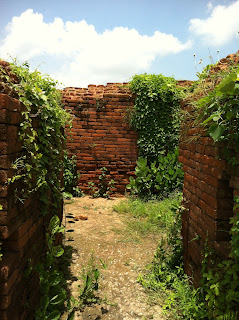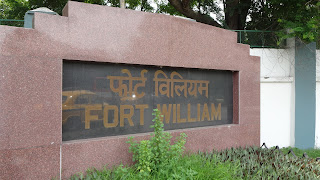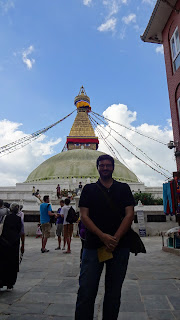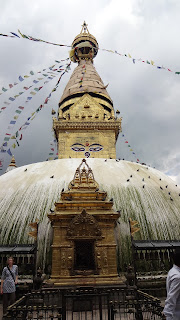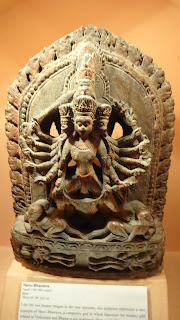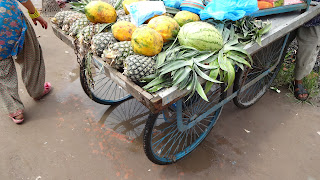It's hard to believe, but my Fellowship is over. Five months in India, several field visits, lots of poring over research papers and textbooks, partnering with my GSK counterpart, Clara, to develop a research protocol and survey, working with my CARE colleagues in New Delhi and Patna to train interviewers, collect and translate and analyze survey results.
Since my last post, we've spent time planning our final presentation. We ran into a few delays due to the October holidays as well as the fact that the Patna team had to attend to a new round of Indoor Residual Spraying (IRS) to help control the sandfly population in rural Bihar. As such, the data analysis got pushed back a bit, and though we ultimately received some of the initial data, we are still awaiting the final analysis package.
This means that we should have a clearer picture about exactly how the private sector physicians and unqualified providers function in the diagnosis and treatment of Kala Azar soon. That said, we were able to give a well-received presentation to some of the program leaders in the CARE HQ last week - on my last day in the office - which encapsulated everything we'd learned to date, including a snapshot of my literature review in June, details of our field visits with anecdotes from patients and providers, an overview of our study goals and methodology, and some of those aforementioned early results to help explain what we've learned to date.
Overall, the data already show that the Unqualified Medical Practitioners (UMPs, or Quacks) do indeed play a significant role in Kala Azar diagnosis and treatment in the highly-endemic areas upon which we focused for the study. The early results showed that they sometime send patients to get tested for KA, they sometimes treat them as well (with whatever medicines they can obtain or can be arranged via a qualified doctor for whom they serve as assistants, administering the drug in or near the patient's home). We can see that the UMPs also have at least a basic understanding of the disease and its most common symptoms; this means that, with a little training, they might become much more able to quickly get affected patients to the proper care they need. And they were almost all willing to participate in a government- or NGO-led tracking program which would help focus elimination efforts on the areas in most need, much more quickly than is currently possible.
There is still a long way to go to eliminate Kala Azar in South Asia, and in Bihar in particular. The Government of India and the Government of the State of Bihar have both put certain structures into place to help - Primary Health Centres are in place which have diagnostic tools and medicines for KA, available free for patients. Training has been established to give doctors the knowledge they need to quickly identify these patients and treat them properly. Preventative programs like IRS have been established.
However, we have seen firsthand that those prevention campaigns are not always effectively run, or conducted on time. We have heard that medicine stock-outs have happened as recently as 2012, something that the government must keep a close watch upon. And our survey shows that there seems to be some mistrust among patients regarding the Public Health Centres - certainly these facilities are often overcrowded and patients do not feel like they can get the one-on-one attention that they deserve.
Thus, the Private sector continues to be an important piece of the Kala Azar puzzle. Patients prefer the face-to-face time they get from both UMPs and private qualified doctors; they trust them because they are located in their own villages and are well-known to the community.
Thus, if there is a way to incorporate both private qualified doctors and UMPs into the elimination effort, it should be much more effective; our survey results should point to multiple ways with which CARE can improve local educational efforts to improve knowledge among both providers and villagers. We should be able to develop a proposal to incorporate Private providers into both medicine and diagnostic tool distribution programs, as well as patient tracking efforts.
I hope to continue helping out with this project long-distance from home. I am certainly looking forward to getting the final data package soon! Clara has a few more weeks in New Delhi to finish up, and our project lead, Dr. Indranath, will remain involved, so we will be in contact to review results and discuss the conclusions we can draw from the data.
This past five months has been life-changing in many ways. I've met some wonderful, passionate people; seen so much sadness and yet so much beauty in rural India. I've traveled around the country to meet people from all walks of life and see cultural and spiritual landmarks and events. It's been quite a ride!
I leave India with a strong belief that I will be returning to continue my work here - hopefully with my family next time, so that they can see some of the things I've seen and learn from it as I have. I will definitely continue to find ways to stay involved with Development work in general.
I am so grateful to the people from CARE as well as Pfizer and the Global Health Fellowship team for giving me this amazing opportunity.
Since my last post, we've spent time planning our final presentation. We ran into a few delays due to the October holidays as well as the fact that the Patna team had to attend to a new round of Indoor Residual Spraying (IRS) to help control the sandfly population in rural Bihar. As such, the data analysis got pushed back a bit, and though we ultimately received some of the initial data, we are still awaiting the final analysis package.
This means that we should have a clearer picture about exactly how the private sector physicians and unqualified providers function in the diagnosis and treatment of Kala Azar soon. That said, we were able to give a well-received presentation to some of the program leaders in the CARE HQ last week - on my last day in the office - which encapsulated everything we'd learned to date, including a snapshot of my literature review in June, details of our field visits with anecdotes from patients and providers, an overview of our study goals and methodology, and some of those aforementioned early results to help explain what we've learned to date.
Overall, the data already show that the Unqualified Medical Practitioners (UMPs, or Quacks) do indeed play a significant role in Kala Azar diagnosis and treatment in the highly-endemic areas upon which we focused for the study. The early results showed that they sometime send patients to get tested for KA, they sometimes treat them as well (with whatever medicines they can obtain or can be arranged via a qualified doctor for whom they serve as assistants, administering the drug in or near the patient's home). We can see that the UMPs also have at least a basic understanding of the disease and its most common symptoms; this means that, with a little training, they might become much more able to quickly get affected patients to the proper care they need. And they were almost all willing to participate in a government- or NGO-led tracking program which would help focus elimination efforts on the areas in most need, much more quickly than is currently possible.
There is still a long way to go to eliminate Kala Azar in South Asia, and in Bihar in particular. The Government of India and the Government of the State of Bihar have both put certain structures into place to help - Primary Health Centres are in place which have diagnostic tools and medicines for KA, available free for patients. Training has been established to give doctors the knowledge they need to quickly identify these patients and treat them properly. Preventative programs like IRS have been established.
However, we have seen firsthand that those prevention campaigns are not always effectively run, or conducted on time. We have heard that medicine stock-outs have happened as recently as 2012, something that the government must keep a close watch upon. And our survey shows that there seems to be some mistrust among patients regarding the Public Health Centres - certainly these facilities are often overcrowded and patients do not feel like they can get the one-on-one attention that they deserve.
Thus, the Private sector continues to be an important piece of the Kala Azar puzzle. Patients prefer the face-to-face time they get from both UMPs and private qualified doctors; they trust them because they are located in their own villages and are well-known to the community.
Thus, if there is a way to incorporate both private qualified doctors and UMPs into the elimination effort, it should be much more effective; our survey results should point to multiple ways with which CARE can improve local educational efforts to improve knowledge among both providers and villagers. We should be able to develop a proposal to incorporate Private providers into both medicine and diagnostic tool distribution programs, as well as patient tracking efforts.
I hope to continue helping out with this project long-distance from home. I am certainly looking forward to getting the final data package soon! Clara has a few more weeks in New Delhi to finish up, and our project lead, Dr. Indranath, will remain involved, so we will be in contact to review results and discuss the conclusions we can draw from the data.
This past five months has been life-changing in many ways. I've met some wonderful, passionate people; seen so much sadness and yet so much beauty in rural India. I've traveled around the country to meet people from all walks of life and see cultural and spiritual landmarks and events. It's been quite a ride!
I leave India with a strong belief that I will be returning to continue my work here - hopefully with my family next time, so that they can see some of the things I've seen and learn from it as I have. I will definitely continue to find ways to stay involved with Development work in general.
I am so grateful to the people from CARE as well as Pfizer and the Global Health Fellowship team for giving me this amazing opportunity.
























































